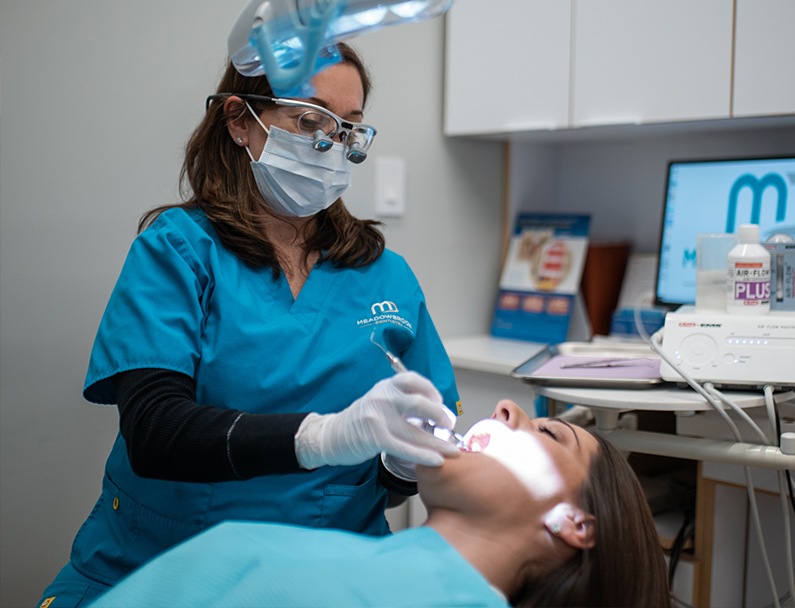Check Out the Range of Dental Issues Dentists Generally Deal With
From the common issue of tooth cavities created by microbial task to the a lot more perilous progression of gum tissue condition, oral specialists need to be adept at early detection and intervention. Tooth level of sensitivity, frequently resulting from used enamel, adds one more layer of complexity, while the early identification of oral cancer can be life-saving.
Tooth Cavities and Dental Caries
While keeping optimum dental hygiene is crucial, cavities and dental caries remain widespread concerns that dental practitioners often attend to. Dental caries, likewise referred to as tooth decays, are brought on by the demineralization of tooth enamel due to acid-producing germs in the mouth. These bacteria thrive on sugars and starches from food and drinks, producing a cycle of acid attacks that progressively wear down the enamel and dentin layers of teeth. If left without treatment, tooth cavities can lead to substantial dental complications, consisting of infections and missing teeth.
To identify dental caries and dental cavity, dentists employ a mix of visual assessments, dental X-rays, and sometimes laser fluorescence gadgets. Treatment choices differ depending upon the seriousness of the degeneration. Early-stage tooth cavities could be handled with fluoride therapies that aid remineralize the enamel. For even more sophisticated degeneration, a dental practitioner may require to get rid of the compromised tissue and restore the tooth with dental fillings made from products such as composite resin, amalgam, or porcelain.
Safety nets are extremely important in combating dental caries and dental caries. Normal oral examinations, appropriate brushing and flossing techniques, and a balanced diet plan reduced in sugary foods and beverages are essential techniques that sustain dental wellness and reduce the threat of cavities.
Gum Illness

Periodontitis occurs when plaque, a sticky film of microorganisms, hardens right into tartar and builds up listed below the gum line. This triggers the gum tissues to retreat from the teeth, creating pockets that come to be infected. As the body's immune system fights the germs, the bone and connective cells that hold teeth in position are broken down. The danger variables for gum illness consist of inadequate oral hygiene, smoking, diabetes, and genetic tendency.
Dental practitioners diagnose gum tissue disease via clinical evaluation and gum probing to gauge pocket midsts around the teeth. Therapy might involve scaling and origin planing to remove tartar and microorganisms from tooth surfaces and beneath the gums.

Tooth Sensitivity
Beyond gum tissue condition, another common dental issue that patients frequently experience is tooth sensitivity. Characterized by a sharp, transient here are the findings pain in reaction to stimuli such as hot, cold, sweet, or acidic foods and drinks, tooth level of sensitivity can considerably impact a client's quality of life.
Additionally, oral procedures, fractured teeth, and gum tissue disease can reveal the dentin. To minimize tooth sensitivity, dentists might suggest making use of tooth paste formulated for delicate teeth, fluoride therapies to reinforce enamel, or dental bonding to cover revealed dentin.
Ultimately, resolving tooth sensitivity requires an extensive approach that consists of both preventive actions and targeted treatments to minimize discomfort and safeguard the oral structures.
Dental Cancer
Oral cancer cells, a potentially lethal and major problem, frequently flies under the radar in routine dental treatment discussions. This sort of cancer cells can impact any type of part of the oral cavity, consisting of the lips, tongue, cheeks, floor of the mouth, soft and tough tastes buds, sinuses, and throat. Early detection is important for successful therapy, yet numerous instances are identified at advanced phases as a result of subtle preliminary symptoms.
Misaligned Bites
Misaligned bites, also called malocclusions, are a typical dental concern that can substantially influence both oral health and wellness and general lifestyle - dentist eugene or. These problems take place when the top and lower teeth do not straighten effectively, resulting in problems in attacking, chewing, and also speaking. Malocclusions can be categorized into different kinds, consisting of overbites, underbites, crossbites, and open bites, each offering distinct difficulties that require tailored treatment methods
The sources of misaligned bites are diverse and can include genetic elements, very early loss of main teeth, thumb sucking, and injuries to the jaw. Signs commonly consist of pain or pain in the jaw, frequent biting of the inner cheeks, and an increased danger of tooth degeneration and periodontal illness due to difficulty find in preserving dental hygiene.
Dental experts my website and orthodontists use a variety of interventions to deal with misaligned bites, from traditional dental braces and clear aligners to advanced procedures in extreme cases. Early diagnosis and therapy are important to avoid issues such as temporomandibular joint (TMJ) problems and uncommon wear on teeth. With detailed evaluation and individualized therapy plans, dental experts play a crucial function in remedying malocclusions and boosting individuals' oral feature and aesthetic appeals.
Verdict
Dental caries and tooth degeneration result from bacterial task that compromises tooth enamel, while gum condition can rise from gingivitis to extreme gum problems. Tooth level of sensitivity includes pain from thermal stimuli, demanding particular treatment.
To diagnose dental caries and tooth decay, dental practitioners utilize a combination of visual exams, dental X-rays, and often laser fluorescence tools.Beyond gum disease, one more typical oral problem that clients regularly experience is tooth sensitivity. In addition, oral procedures, fractured teeth, and gum tissue condition can subject the dentin. To reduce tooth sensitivity, dental practitioners might suggest using tooth paste developed for sensitive teeth, fluoride treatments to strengthen enamel, or dental bonding to cover revealed dentin. Tooth cavities and tooth degeneration result from microbial task that jeopardizes tooth enamel, while gum tissue condition can escalate from gingivitis to severe periodontal conditions.